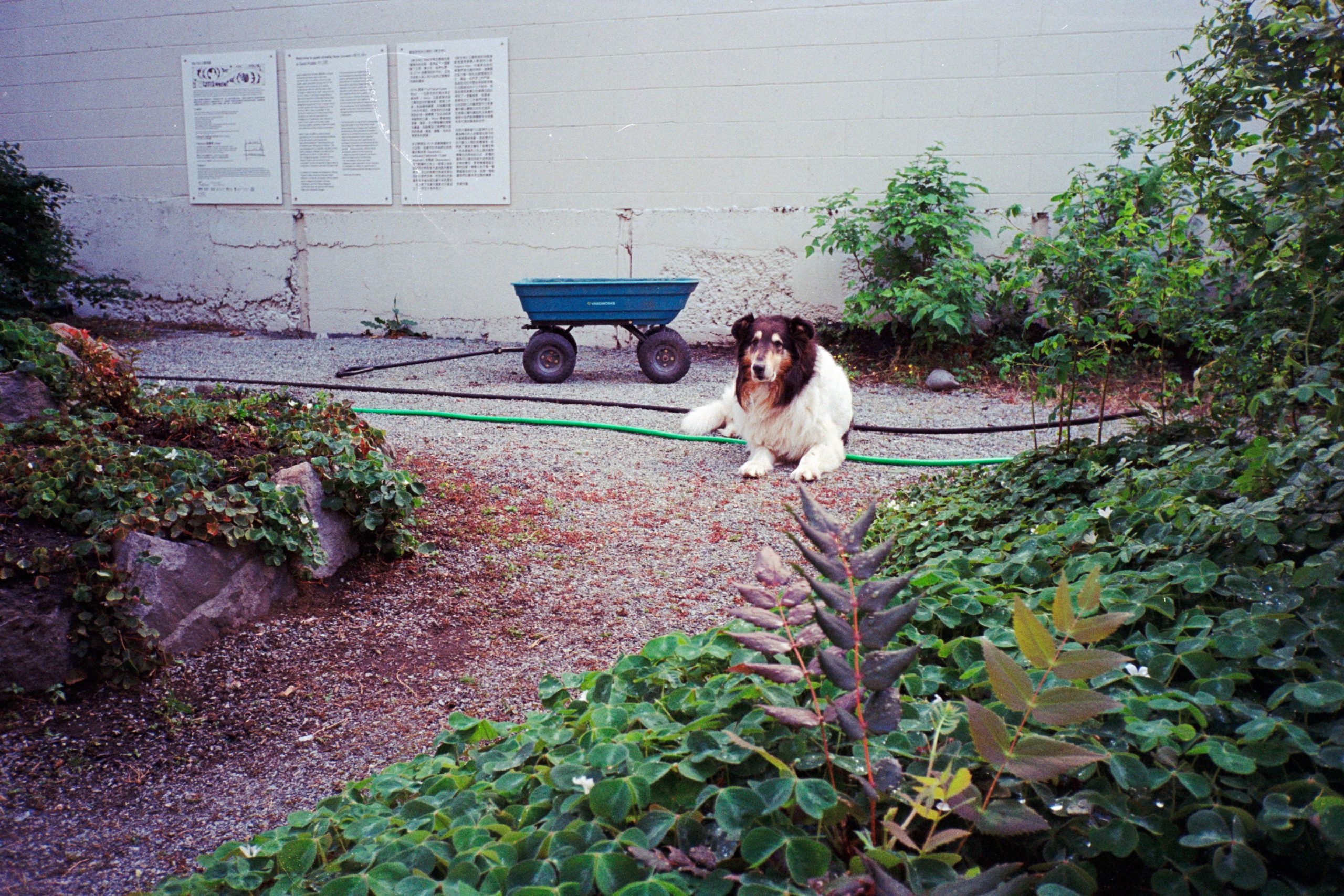This is a brief hangout, like a quick glance of the space. If you’d like a more detailed hangout with the space, please check out the Full Hangout Description.
The x̱aw̓s shew̓áy̓ New Growth 新生林 garden is part of the Semi-Public outdoor space operated by 221A and is located at 271 Union Street, in Chinatown, Vancouver. It is designed with Indigenous permaculture techniques, Hügelkultur, and Coast Salish symbolism.
This intentional food forest lives in a narrow space between a two-story shop and a tall residential building and has a simple metal gate from the sidewalk on Union Street. It’s just 25 feet wide and almost 121 feet in length.
The brick walls facing into the garden are painted white, directing sunlight into the cozy space. A bench stands against the western wall near the entrance. Midway down, on the eastern wall is a set of panels that includes a schematic drawing of the garden and descriptions and the philosophy of the space in Traditional Chinese and English.
The garden is landscaped into small islands of plants in low hugel mounds: mounds that are built up from decaying wood, like Red Cedar, and sticks, leaf debris, and soil. The mounds and garden beds curve along grey gravel paths that wind like rivers. There is also a small spiral garden. There is a hearth built of a small cob oven with garden arcs radiating and a low stone wall also covered with red cob to sit on. Directly across from the cob oven, against the western brick wall, is a second bench.
You will find a mix of low plants like wild strawberries, cloudlike oxalis oregana, and small-leafed, purplish wood-sorrel. Taller plants break through the tufts of thick low plants, including Oregon grape, fireweed, wild roses, ocean spray, a young yew tree, native plum trees, red osier dogwood, and canes and bushes of red huckleberry, snowberry, and salmonberry. You will also come across found art like a broken, semi-carved stick discovered on the garden site and placed standing among a sea of wild strawberries. A cook stick plant bursts forth down the path from a dripping snowberry plant, its stalks to be used when cooking salmon.
While most of the plants were brought in intentionally, volunteers such as a young, broad-leafed fig tree, tomato plants, an oak tree, and deadly nightshade have made their way into the space, taken root, and are flourishing. You might happen upon a small apple tree (lovingly nicknamed Rapple) thanks to one of the local rats carrying in the apple core and seeds on one of its forays through the space. Tiny clusters of tan mushrooms peek up in spots amidst the low plants. Visit the panels on the east wall to learn more information about the plants you communed with and the young Indigeous people who built and steward the garden with T’uy’tanat Cease Wyss.
Living Description
Living Description is an education initiative convened by artist Aislinn Thomas that conceptualizes access not as an accommodation, but as a relational process of shared sense-making. Beginning with a series of alt-text and visual description workshops led by Aislinn Thomas and Ramya Amuthan in 2021, the project culminates in the launch of 1-833-SEMI-PUB: a toll-free listening space featuring six commissioned audio descriptions that offer multiple non-visual ways to experience the x̱aw̓s shew̓áy̓ New Growth 新生林 garden as a living system.

